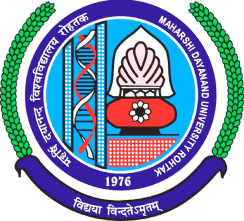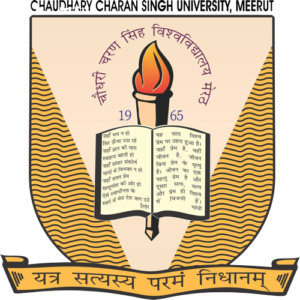
B.SC. in Textiles and Apparel Designing: Admission Process, Eligibility Criteria, Course Fees, Subject, Syllabus, Duration, Highlights, F&Q.
B.SC. in Textiles and Apparel Designing Overview:
- Textile Science and Technology: Students learn about the different types of fibers, yarns, and fabrics. This includes understanding the properties and characteristics of various textiles, as well as the technology involved in textile production.
- Apparel Designing: The program covers the principles of fashion design, pattern making, and garment construction. Students learn how to create designs, develop patterns, and bring their concepts to life through the production of clothing.
- Fashion Merchandising: This aspect of the program focuses on the business side of the fashion industry. Students learn about marketing, retailing, and merchandising strategies. This includes understanding consumer behavior, trend analysis, and the economic aspects of the fashion market.
- Textile and Apparel Quality Control: Students gain knowledge about maintaining quality standards in textile and apparel production. This includes understanding the inspection processes, quality testing methods, and ensuring that products meet industry standards.
- Fashion Illustration and CAD (Computer-Aided Design): Students are often taught how to illustrate their design ideas through both traditional methods and digital tools. CAD is commonly used in the fashion industry for creating detailed designs and patterns.
- Textile and Apparel Marketing: This area of study focuses on the promotion and marketing of textile and apparel products. Students learn about advertising, branding, and creating effective marketing strategies for the fashion industry.
- Internship/Practical Experience: Many programs include internships or practical experiences, allowing students to apply their theoretical knowledge in real-world settings. This provides valuable industry exposure and enhances their practical skills.
- Research and Development: Some programs may include a research component where students explore new trends, materials, or techniques in textiles and apparel design.
B.SC. in Textiles and Apparel Designing Eligibility:
- Educational Qualifications:
- Candidates are typically required to have completed 10+2 (or its equivalent) from a recognized educational board.
- The qualifying examination should include relevant subjects such as Physics, Chemistry, and Mathematics or Biology, depending on the specific requirements of the program.
- Minimum Percentage:
- Many institutions may specify a minimum percentage requirement in the qualifying examination. This minimum percentage can vary from one institution to another.
- Entrance Exams:
- Some universities or colleges may conduct entrance exams for admission to their B.Sc. Textiles and Apparel Designing programs. Candidates are required to take and pass these exams as part of the admission process.
- Merit-Based Admission:
- In addition to entrance exams, some institutions also offer admission based on merit, considering the candidate’s academic performance in the qualifying examination.
- Interview or Portfolio Assessment:
- Some institutions may require candidates to participate in an interview or submit a portfolio showcasing their artistic or creative abilities. This is particularly common for programs that emphasize design skills.
- Age Limit:
- There is typically no specific age limit for admission to undergraduate programs, but candidates are generally expected to meet the age criteria set by the respective educational institution.
B.SC. in Textiles and Apparel Designing Why to do?
- Passion for Fashion and Design:
- If you have a genuine interest in fashion, textiles, and design, pursuing a B.Sc. in Textiles and Apparel Designing allows you to turn your passion into a career. The program provides a structured platform to enhance your creativity and skills in fashion and design.
- Diverse Career Opportunities:
- The fashion and textiles industry offers a wide range of career opportunities. Graduates of this program can explore careers as fashion designers, textile technologists, merchandisers, quality control specialists, fashion illustrators, and more. The diversity of roles allows individuals to find a niche that aligns with their interests and strengths.
- Innovation and Creativity:
- The field of textiles and apparel designing is dynamic and constantly evolving. The program encourages students to stay updated with the latest trends, technologies, and materials. It provides a platform for creative expression and innovation in designing new fabrics, patterns, and fashion trends.
- Entrepreneurial Opportunities:
- Individuals with a B.Sc. in Textiles and Apparel Designing may choose to start their own fashion labels or textile businesses. The program equips students with the knowledge and skills needed to understand the business side of the fashion industry, making entrepreneurship a viable option.
- Industry-Relevant Skills:
- The curriculum of the program is designed to impart both theoretical knowledge and practical skills. Students learn about textile science, garment construction, fashion illustration, and other relevant areas, making them well-prepared for the demands of the industry.
- Global Perspective:
- Fashion is a global industry, and studying textiles and apparel designing often involves exposure to international trends, styles, and markets. This global perspective can be beneficial for those who aspire to work in an industry with an international reach.
- Personal Fulfillment:
- For many individuals, working in the fashion and textiles industry is personally fulfilling. Seeing one’s designs come to life, contributing to the creation of new trends, and playing a role in the fashion ecosystem can be deeply satisfying.
- Job Satisfaction:
- Careers in textiles and apparel designing can be highly rewarding, especially for those who find joy in creative pursuits. Job satisfaction often comes from the ability to bring imaginative designs to reality and positively impact the world of fashion.
B.SC. in Textiles and Apparel Designing Highlights:
Reasons to Pursue B.Sc. in Textiles and Apparel Designing | |
Passion for Fashion and Design | – Turning creativity into a career. |
Diverse Career Opportunities | – Range of roles: designer, technologist, merchandiser, etc. |
Innovation and Creativity | – Dynamic field with opportunities for creative expression. |
Entrepreneurial Opportunities | – Skills for starting fashion or textile businesses. |
Industry-Relevant Skills | – Balanced curriculum covering theoretical and practical aspects. |
Global Perspective | – Exposure to international trends, styles, and markets. |
Personal Fulfillment | – Satisfaction from contributing to the fashion ecosystem. |
Job Satisfaction | – Rewarding careers, bringing designs to life and impacting fashion. |
B.SC. in Textiles and Apparel Designing Admission Process:
- Check Eligibility Criteria:
- Prospective students must review the eligibility criteria for the B.Sc. Textiles and Apparel Designing program. This often includes educational qualifications, minimum percentage requirements, and any specific subject prerequisites.
- Academic Qualifications:
- Candidates are required to have completed their 10+2 education (or its equivalent) from a recognized board. The qualifying examination should typically include relevant subjects such as Physics, Chemistry, and Mathematics or Biology, depending on the program’s requirements.
- Entrance Exams (if applicable):
- Some institutions conduct entrance exams to assess the aptitude, creativity, and subject-specific knowledge of candidates. The format and content of these exams may vary but often include sections on design, aptitude, and general knowledge.
- Application Form Submission:
- Interested candidates need to fill out the application form provided by the respective university or college. The form is usually available online on the institution’s official website or through designated admission portals.
- Application Fee:
- Most institutions require payment of a non-refundable application fee along with the submission of the application form. The fee amount varies, and details are provided in the admission notification or prospectus.
- Merit-Based Admission:
- In some cases, admission is granted based on merit. The academic performance of the candidate in the qualifying examination is considered, and a merit list is prepared. This list may be published on the institution’s website or notice board.
- Entrance Exam Results:
- For programs that require entrance exams, candidates receive their results after completing the test. The results may be available online or communicated through other specified means.
- Interview or Portfolio Assessment:
- Some institutions may conduct interviews or assess portfolios of candidates, particularly for programs with a strong emphasis on design. This step allows the admissions committee to evaluate the candidate’s creativity, communication skills, and suitability for the program.
- Counseling (if applicable):
- Institutions may conduct counseling sessions for shortlisted candidates. During these sessions, candidates receive information about the program, course structure, and career prospects. It also provides an opportunity for candidates to clarify any queries they may have.
- Document Verification:
- Shortlisted candidates are required to submit their original documents for verification. This typically includes academic transcripts, certificates, identity proof, and any other documents specified by the institution.
- Admission Offer and Acceptance:
- Successful candidates receive admission offers either through an online portal or a formal letter. Upon acceptance of the offer, candidates are usually required to pay the admission fee to secure their place in the program.
- Orientation Program:
- Once the admission process is complete, institutions often conduct an orientation program for newly admitted students. This program provides information about the academic environment, facilities, and campus life.
B.SC. in Textiles and Apparel Designing Top Colleges for the Course:
- National Institute of Fashion Technology (NIFT)
- Locations: Various cities including Delhi, Mumbai, Bengaluru, Chennai, Kolkata, and others.
- Website: NIFT
- Pearl Academy
- Locations: Delhi, Mumbai, Jaipur.
- Website: Pearl Academy
- Symbiosis Institute of Design (SID)
- Location: Pune, Maharashtra.
- Website: SID
- Manipal Institute of Technology (MIT)
- Location: Manipal, Karnataka.
- Website: MIT Manipal
- Amity School of Fashion Technology
- Location: Noida, Uttar Pradesh.
- Website: Amity School of Fashion Technology
- National Institute of Design (NID)
- Locations: Ahmedabad (Main Campus), Gandhinagar, Bengaluru, and others.
- Website: NID
- JD Institute of Fashion Technology
- Locations: Multiple cities across India.
- Website: JD Institute
- International Institute of Fashion Design (INIFD)
- Locations: Multiple centers across India.
- Website: INIFD
- Sri Venkateswara College, Delhi University
- Location: New Delhi.
- Website: Sri Venkateswara College
- National Institute of Fashion Designing (NIFD)
- Locations: Multiple centers across India.
- Website: NIFD
B.SC. in Textiles and Apparel Designing Syllabus:
- Introduction to Textiles and Fibers
- Fabric Study and Analysis
- Textile Science
- Introduction to Apparel Designing
- Fashion Illustration and Design
- Pattern Making and Garment Construction
- Textile Chemistry
- Apparel Merchandising and Marketing
- Fashion Retailing
- Apparel Production Management
- Quality Control in Textiles and Apparel
- Textile and Apparel Testing
- Fashion Communication
- CAD (Computer-Aided Design) in Fashion
- Textile Printing and Dyeing
- Fashion Forecasting and Trends
- Textile and Apparel Economics
- Industrial Training/Internship
- Research Methods in Textiles and Apparel
- Entrepreneurship in Textiles and Apparel
B.Sc. TEXTILES AND APPAREL DESIGNING FAQ Answer with Question:
Q: What is B.Sc. Textiles and Apparel Designing?
A: B.Sc. Textiles and Apparel Designing is an undergraduate program that focuses on the study of textiles, fashion design, and apparel production. It equips students with the knowledge and skills needed for careers in the dynamic and creative field of fashion and textiles.
Q: What are the eligibility criteria for B.Sc. Textiles and Apparel Designing?
A: Eligibility typically includes completing 10+2 education with relevant subjects such as Physics, Chemistry, and Mathematics or Biology. Some institutions may conduct entrance exams, and specific minimum percentage requirements may apply.
Q: What are the career opportunities after completing B.Sc. Textiles and Apparel Designing?
A: Graduates can pursue diverse careers, including fashion designer, textile technologist, merchandiser, quality control specialist, and more. The program opens doors to roles in design, production, marketing, and entrepreneurship within the fashion and textiles industry.
Q: Is an internship part of the B.Sc. Textiles and Apparel Designing program?
A: Many programs include an internship or practical experience component. This provides students with real-world exposure, allowing them to apply theoretical knowledge in professional settings and gain industry experience.
Q: Can I start my own fashion or textile business after completing this program?
A: Yes, the program often includes entrepreneurial aspects, providing students with skills and knowledge for starting their own fashion labels or textile businesses. It covers business-related topics such as merchandising and marketing.
Q: What are the key subjects covered in the B.Sc. Textiles and Apparel Designing syllabus?
A: Subjects include textile science, fabric study, apparel design, pattern making, garment construction, textile chemistry, merchandising, marketing, quality control, textile economics, and more. The curriculum aims to provide a comprehensive understanding of the field.
Q: Are there specific age limits for admission to B.Sc. Textiles and Apparel Designing?
A: Generally, there is no specific age limit for undergraduate programs. However, candidates are expected to meet the age criteria set by the respective educational institution.
Q: How can I prepare for admission to a B.Sc. Textiles and Apparel Designing program?
A: Preparation may involve understanding the eligibility criteria, practicing for any required entrance exams, and ensuring that your academic background aligns with the program’s prerequisites. Additionally, building a portfolio showcasing your interest and creativity can enhance your application.

















